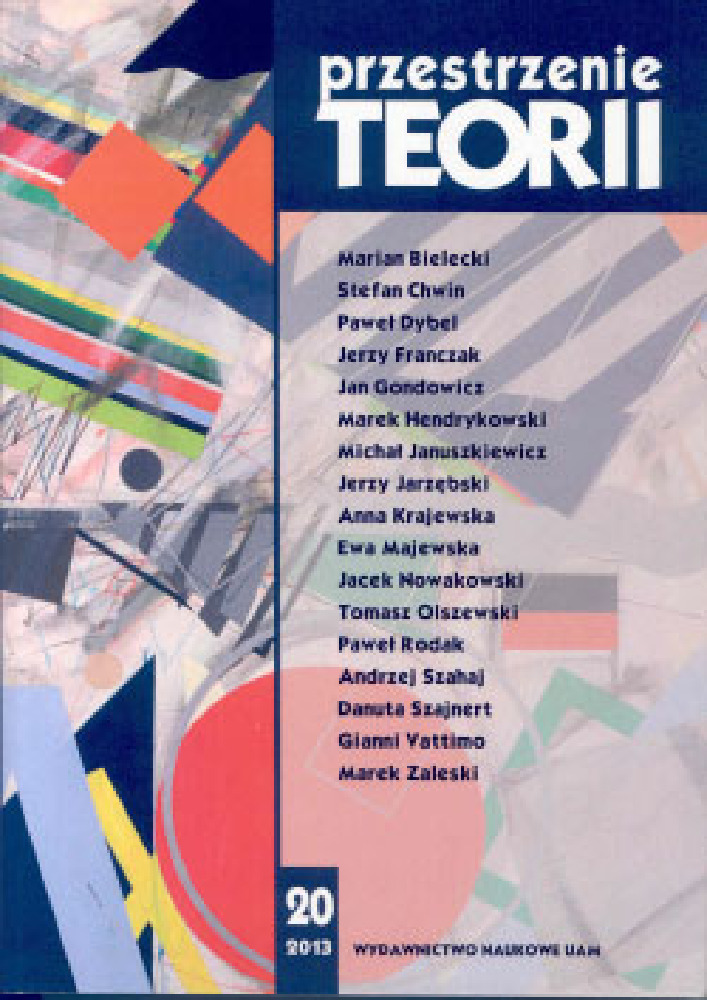Abstrakt
Gombrowicz’s life can be divided into two parts. During the first period of his life, Gombrowicz is preoccupied with the “Ferdydurke Man”, i.e. a funny character who is tortured by Form, which he tries to overcome but which he finally succumbs to by falling into inauthenticity. This man, though incoherent, is understandable both for the author and the reader because he comes from the world they both live in and epitomizes their own problems, which makes readers laugh. The second period of Gombrowicz’s life begins with a scene in Venice in 1938. He meets young Italian pilots who are ready to destroy the city if Mussolini gives such an order. This is when new and “savage” young people take the place of the “Ferdydurke Man”. They are a product of their time – they do not think independently and they constitute a breeding ground for totalitarian ideologies. Gombrowicz tries to understand this generation and presents a picture of the world these young people are building for themselves in consecutive dark literary works.Bibliografia
J. Iwaszkiewicz, list do W. Gombrowicza z 16 maja 1946 roku w tomie W. Gombrowicz, Walka o sławę. Korespondencja, cz. I (Witold Gombrowicz, Józef Wittlin, Jarosław Iwaszkiewicz, Artur Sandauer), układ, przedmowy, przypisy J. Jarzębski, Kraków 1996.
W. Gombrowicz, Wspomnienia polskie; Wędrówki po Argentynie, red. nauk. J. Błoński, J. Jarzębski, Kraków 1996.
K. Wyka, Tragiczność, drwina i realizm, [w:] Pogranicze powieści, wyd. II poszerzone, Warszawa 1974.
J. Franczak, Rzecz o nierzeczywistości. „Mdłości” Jeana Paula Sartre’a i „Ferdydurke” Witolda Gombrowicza, Kraków 2002.
M.P. Markowski, Czarny nurt. Gombrowicz, świat, literatura, Kraków 2004.
W. Gombrowicz, Ferdydurke (fragment większej całości), „Skamander” 1935, z. LX.
S. Chwin, Gombrowicz i Niemcy, [w:] Witold Gombrowicz nasz współczesny. Materiały międzynarodowej konferencji naukowej w stulecie urodzin pisarza. Uniwersytet Jagielloński– Kraków, 22-27 marca 2004, red. J. Jarzębski, Kraków 2012.
W. Gombrowicz, Pornografia, Kraków 1987.
Licencja
Autorzy
Autorzy tekstów przyjętych do publikacji w czasopiśmie „Przestrzeniach Teorii” są zobowiązani do wypełnienia, podpisania i odesłania na adres redakcji umowy o udzielenie nieodpłatnej licencji do utworów, z zobowiązaniem do udzielania sublicencji CC.
Zgodnie z umową, autorzy tekstów opublikowanych w czasopiśmie „Przestrzeniach Teorii” udzielają Uniwersytetowi im. Adama Mickiewicza w Poznaniu niewyłącznej i nieodpłatnej licencji oraz zezwalą na użycie sublicencji Creative Commons Attribution-NonCommercial-NoDerivatives 4.0 International (CC BY-NC-ND 4.0).
Autorzy zachowują prawa do dalszego, swobodnego rozporządzania utworem.
Autorzy, którzy wykorzystują w swoim tekście cudze utwory (np. ilustracje, fotografie) proszeni są o dostarczenie do redakcji czasopisma zgodę na publikację od uprawnionych podmiotów.
Użytkownicy
Zainteresowani użytkownicy internetu uprawnieni są do korzystania z utworów opublikowanych po 2015 roku „Przestrzeniach Teorii” tylko w calach niekomercyjnych, pod następującymi warunkami:
- uznanie autorstwa - obowiązek podania wraz z rozpowszechnionym utworem, informacji, o autorstwie, tytule, źródle (odnośniki do oryginalnego utworu, DOI) oraz samej licencji;
- bez tworzenia utworów zależnych - utwór musi być zachowany w oryginalnej postaci, nie można bez zgody twórcy rozpowszechniać np. tłumaczeń, opracowań.
Do wszystkich tekstów opublikowanych przed 2015 r. prawa autorskie są zastrzeżone.
Inne
Uniwersytet im. Adama Mickiewicza w Poznaniu zachowuje prawo do czasopisma jako całości (układ, forma graficzna, tytuł, projekt okładki, logo itp.).
